I've implemented Xiaolin Wu circle algorithm from here: https://create.stephan-brumme.com/antialiased-circle/ in c++:
float radiusX = endRadius;
float radiusY = endRadius;
float radiusX2 = radiusX * radiusX;
float radiusY2 = radiusY * radiusY;
float maxTransparency = 127;
float quarter = roundf(radiusX2 / sqrtf(radiusX2 + radiusY2));
for(float _x = 0; _x <= quarter; _x++) {
float _y = radiusY * sqrtf(1 - _x * _x / radiusX2);
float error = _y - floorf(_y);
float transparency = roundf(error * maxTransparency);
int alpha = transparency;
int alpha2 = maxTransparency - transparency;
setPixel4(x, y, _x, floorf(_y), r, g, b, alpha, data, areasData, false);
setPixel4(x, y, _x, floorf(_y) - 1, r, g, b, alpha2, data, areasData, false);
}
quarter = roundf(radiusY2 / sqrtf(radiusX2 + radiusY2));
for(float _y = 0; _y <= quarter; _y++) {
float _x = radiusX * sqrtf(1 - _y * _y / radiusY2);
float error = _x - floorf(_x);
float transparency = roundf(error * maxTransparency);
int alpha = transparency;
int alpha2 = maxTransparency - transparency;
setPixel4(x, y, floorf(_x), _y, r, g, b, alpha, data, areasData, false);
setPixel4(x, y, floorf(_x) - 1, _y, r, g, b, alpha2, data, areasData, false);
}
x, y are coordinates of center of the circle.
In my opinion it looks fine:
However, I need circle to be filled. Maybe I'm wrong, but I've developed a simple algorithm: iterate from 1 to radius and just draw a circle. It looks like this:
Strange. So, in order to fix this, I'm also setting transparency to the max until I reach the last radius (so it's an outer circle):
As you can see there are strange holes between outer and other layers. I've tried making two outer layers and similar stuff, but haven't got the right result.
Here's the final version of code:
for(int cradius = startRadius; cradius <= endRadius; cradius++) {
bool last = cradius == endRadius;
float radiusX = cradius;
float radiusY = cradius;
float radiusX2 = radiusX * radiusX;
float radiusY2 = radiusY * radiusY;
float maxTransparency = 127;
float quarter = roundf(radiusX2 / sqrtf(radiusX2 + radiusY2));
for(float _x = 0; _x <= quarter; _x++) {
float _y = radiusY * sqrtf(1 - _x * _x / radiusX2);
float error = _y - floorf(_y);
float transparency = roundf(error * maxTransparency);
int alpha = transparency;
int alpha2 = maxTransparency - transparency;
if(!last) {
alpha = maxTransparency;
alpha2 = maxTransparency;
}
setPixel4(x, y, _x, floorf(_y), r, g, b, alpha, data, areasData, false);
setPixel4(x, y, _x, floorf(_y) - 1, r, g, b, alpha2, data, areasData, false);
}
quarter = roundf(radiusY2 / sqrtf(radiusX2 + radiusY2));
for(float _y = 0; _y <= quarter; _y++) {
float _x = radiusX * sqrtf(1 - _y * _y / radiusY2);
float error = _x - floorf(_x);
float transparency = roundf(error * maxTransparency);
int alpha = transparency;
int alpha2 = maxTransparency - transparency;
if(!last) {
alpha = maxTransparency;
alpha2 = maxTransparency;
}
setPixel4(x, y, floorf(_x), _y, r, g, b, alpha, data, areasData, false);
setPixel4(x, y, floorf(_x) - 1, _y, r, g, b, alpha2, data, areasData, false);
}
}
How can I fix this?
edit:
Because I cannot use flood-fill to fill the circle (area I draw on may not be one-colour background and I need to blend these colours) I've implemented simple method to connect points with lines:
I've added 2 drawLine calls in setPixel4 method:
void setPixel4(int x, int y, int deltaX, int deltaY, int r, int g, int b, int a, unsigned char* data, unsigned char* areasData, bool blendColor) {
drawLine(x - deltaX, y - deltaY, x + deltaX, y + deltaY, r, g, b, 127, data, areasData); //maxTransparency
drawLine(x + deltaX, y - deltaY, x - deltaX, y + deltaY, r, g, b, 127, data, areasData); //maxTransparency
setPixelWithCheckingArea(x + deltaX, y + deltaY, r, g, b, a, data, areasData, blendColor);
setPixelWithCheckingArea(x - deltaX, y + deltaY, r, g, b, a, data, areasData, blendColor);
setPixelWithCheckingArea(x + deltaX, y - deltaY, r, g, b, a, data, areasData, blendColor);
setPixelWithCheckingArea(x - deltaX, y - deltaY, r, g, b, a, data, areasData, blendColor);
}
and it looks exactly the same as third image. I think these white pixels inside are caused by outer circle (from xiaolin wu algorithm) itself.
edit 2:
Thanks to @JaMiT I've improved my code and it works for one circle, but fails when I have more on top of each other. First, new code:
void drawFilledCircle(int x, int y, int startRadius, int endRadius, int r, int g, int b, int a, unsigned char* data, unsigned char* areasData, int startAngle, int endAngle, bool blendColor) {
assert(startAngle <= endAngle);
assert(startRadius <= endRadius);
dfBufferCounter = 0;
for(int i = 0; i < DRAW_FILLED_CIRCLE_BUFFER_SIZE; i++) {
drawFilledCircleBuffer[i] = -1;
}
for(int cradius = endRadius; cradius >= startRadius; cradius--) {
bool last = cradius == endRadius;
bool first = cradius == startRadius && cradius != 0;
float radiusX = cradius;
float radiusY = cradius;
float radiusX2 = radiusX * radiusX;
float radiusY2 = radiusY * radiusY;
float maxTransparency = 127;
float quarter = roundf(radiusX2 / sqrtf(radiusX2 + radiusY2));
for(float _x = 0; _x <= quarter; _x++) {
float _y = radiusY * sqrtf(1 - _x * _x / radiusX2);
float error = _y - floorf(_y);
float transparency = roundf(error * maxTransparency);
int alpha = last ? transparency : maxTransparency;
int alpha2 = first ? maxTransparency - transparency : maxTransparency;
setPixel4(x, y, _x, floorf(_y), r, g, b, alpha, cradius, endRadius, data, areasData, blendColor);
setPixel4(x, y, _x, floorf(_y) - 1, r, g, b, alpha2, cradius, endRadius, data, areasData, blendColor);
}
quarter = roundf(radiusY2 / sqrtf(radiusX2 + radiusY2));
for(float _y = 0; _y <= quarter; _y++) {
float _x = radiusX * sqrtf(1 - _y * _y / radiusY2);
float error = _x - floorf(_x);
float transparency = roundf(error * maxTransparency);
int alpha = last ? transparency : maxTransparency;
int alpha2 = first ? maxTransparency - transparency : maxTransparency;
setPixel4(x, y, floorf(_x), _y, r, g, b, alpha, cradius, endRadius, data, areasData, blendColor);
setPixel4(x, y, floorf(_x) - 1, _y, r, g, b, alpha2, cradius, endRadius, data, areasData, blendColor);
}
}
}
Without drawLine calls in setPixel4 it looks like this:
I've improved setPixel4 method to avoid redrawing the same pixel again:
void setPixel4(int x, int y, int deltaX, int deltaY, int r, int g, int b, int a, int radius, int maxRadius, unsigned char* data, unsigned char* areasData, bool blendColor) {
for(int j = 0; j < 4; j++) {
int px, py;
if(j == 0) {
px = x + deltaX;
py = y + deltaY;
} else if(j == 1) {
px = x - deltaX;
py = y + deltaY;
} else if(j == 2) {
px = x + deltaX;
py = y - deltaY;
} else if(j == 3) {
px = x - deltaX;
py = y - deltaY;
}
int index = (px + (img->getHeight() - py - 1) * img->getWidth()) * 4;
bool alreadyInBuffer = false;
for(int i = 0; i < dfBufferCounter; i++) {
if(i >= DRAW_FILLED_CIRCLE_BUFFER_SIZE) break;
if(drawFilledCircleBuffer[i] == index) {
alreadyInBuffer = true;
break;
}
}
if(!alreadyInBuffer) {
if(dfBufferCounter < DRAW_FILLED_CIRCLE_BUFFER_SIZE) {
drawFilledCircleBuffer[dfBufferCounter++] = index;
}
setPixelWithCheckingArea(px, py, r, g, b, a, data, areasData, blendColor);
}
}
}
Then, finally:
It's almost perfect. However, I'm struggling for a lot of time to get rid of this white outline, but I can't.





 ]
]